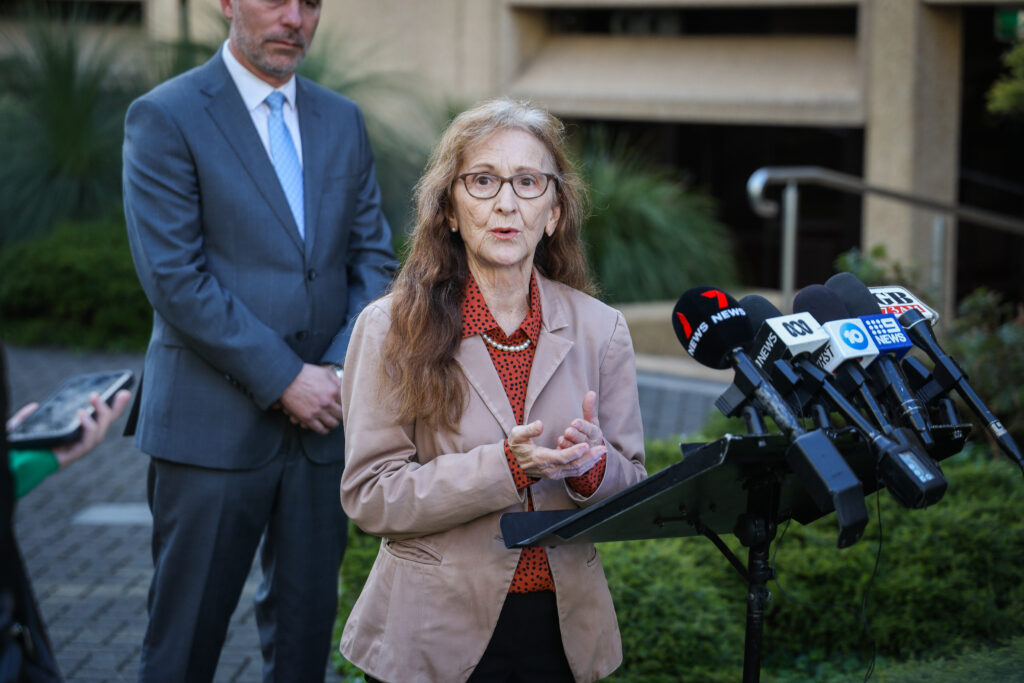NORTHERN Rivers communities will be better prepared for future natural disasters following today’s announcement of over $83 million for 27 New South Wales projects funded under Round Two of the Albanese Government’s Disaster Ready Fund (DRF).
Lismore MP and NSW Parliamentary Secretary for Disaster Recovery Janelle Saffin welcomed the joint announcement by Federal Minister for Emergency Management Senator Jenny McAllister, NSW Minister for Planning Paul Scully and NSW Minister for Emergency Services Jihad Dib.
“Some of these projects had their genesis in the Northern Rivers after the 2019-20 ‘Black Summer’ bushfires and the 2022 floods, and others cover our entire state,” Ms Saffin said.
“Funded by the Australian Government with co-contributions from the NSW and local governments, they share the common aim of ensuring Northern Rivers and Northern Tablelands communities are ready for natural disasters whenever they come our way.”
Successful Round 2 projects include:
- Aboriginal Communities Emergency Management Program: Pilot program will be expanded to more Aboriginal communities in New South Wales, including in the Kyogle and Clarence Valley LGAs, preparing them to respond and recover from disasters. Total funding $8,031,602.
- CoastGuard – NSW Coast and Estuary Hazard Risk Data Portal: The portal aims to provide a central repository and improve the sharing and accessibility of key coastal and estuary hazard data across all levels of government and other stakeholders, including Lismore City, Tweed Shire, Byron Shire, Ballina Shire, Richmond Valley and Clarence Valley LGAs. Total funding $500,000.
- Good Fire Gathering:Project focuses on cultural fire pathways to share knowledge and practices that enhance resilience, adaptive capacity and preparedness, through Caring for Country by communities at risk or impacted by natural hazards. It enables systemic risk reduction through cultural and social connections for cooperative community-led actions and planning, including Lismore City, Kyogle, Tweed Shire, Byron Shire, Richmond Valley and Clarence Valley LGAs. Total funding $5,999,587.
- Community Organisations Disaster Adaptation (CODA) project: Builds disaster preparedness and resilience among NGOs and people most vulnerable to disaster impacts and strengthens connections and cooperation between the community, local NGOs and Emergency Management to take action to reduce local disaster risks in Lismore City, Kyogle and Richmond Valley LGAs. Total funding $5,147,963.
- Pilot Project – Strengthening community capacity and resilience through development of community-led flood intelligence networks in Lismore City, Tweed Shire, Byron Shire and Cabonne Shire LGAs: Northern Rivers communities (Wilsons River Catchment, Mullumbimby/Main Arm, Uki) and Cabonne Shire/Eugowra will partner with the Australian National University to develop, test and evaluate localised community-led flood intelligence networks. These strengthen community capacity/resilience through reduced vulnerability, enhanced communication and new statewide resources for informed and timely preparation and response to flooding events. Total funding $4,709,633.
- Enhancing the capability of NSW to prepare for and respond to risks from coastal hazards: This project seeks to enhance outcomes for coastal communities in NSW that strategically address risks from climate change and coastal hazards. Additional funding to implement the NSW coastal management framework in partnership with local government, including Lismore City, Tweed Shire, Byron Shire, Richmond Valley and Clarence Valley LGAs, will facilitate investment in action to manage threats and risks to the NSW coastal zone. Total funding $12 million.
- Mackillop Seasons’ Community Resilience Project: Will benefit identified communities, in Kyogle, Tweed Shire, Byron Shire, Ballina Shire and Richmond Valley LGAs, by building capacity in local education and community services sector professionals, to address the needs resulting from natural disaster with location-based support and direct delivery for children, young people and adults. This will be achieved through training, mentoring and co-delivery of evidence informed programs. Total funding $2,599,372.
- Building systemic adaptive capacity for Illawarra/Shoalhaven and coordinate alignment of resilience initiatives across regional NSW: Project will build disaster adaptation capacity of councils (including Lismore City, Kyogle, Tweed Shire, Byron Shire, Ballina Shire, Richmond Valley and Clarence Valley LGAs), communities and key stakeholders through systemic embedding of hazard mitigation and resilience plans and resources which enhance current frameworks to reduce disaster exposure and vulnerability. A supporting statewide coordination model will apply learnings and increase resilience maturity across multiple regions. Total funding $2,532,800.
- NSW Bushfire Inquiry Recommendation 17 – Neighbourhood Safer Places: The provision of existing NSW Rural Fire Service Brigade stations (or suitable alternatives) as Neighbourhood Safer Places in remote communities, for community use during bushfire events. This will require the establishment of Asset Protection Zones and building works to increase building resilience from a bushfire and enhance community safety. LGAs include Tenterfield Shire and Clarence Valley. Total funding $6,504,000.
- Heatwave Hub, a comprehensive risk assessment, resilience and preparedness initiative for vulnerable communities across all of NSW: addresses heatwave risks through risk assessments, co-designing plans/toolkits, focus groups and workshops. Outcomes include the ‘Heatwave Hub’ website, LGA heatwave action plans, and community capacity building. The project will promote informed planning for effective heatwave preparedness and improved well-being. Total funding $1,367,184.
- Aboriginal Peoples Engagement Program across all of NSW: NSW SES will partner with Aboriginal peoples to co-design a program incorporating cultural safety, how to warn community and understanding how First Nations people prepare for and respond to the impact of floods. This includes understanding the cultural barriers to evacuation and how best to reduce risk for Aboriginal people. Total funding $4,056,763.
- Creating Safe Shelter Spaces – Holding a gendered lens on Emergency Management simulations across all of NSW: GADAus will work with six LGAs in NSW to ensure that the safety of emergency shelters are assessed through a gendered lens, ensuring the safety of women, children, LGBTQIA+ during disasters. The LGA areas will be chosen from high disaster risk areas and form a pilot to extend to other areas of NSW. Total funding $120,578.
Federal Minister for Emergency Management, Jenny McAllister said:
“The Albanese Government is committed to helping protect New South Wales communities from disasters.
“We know that our climate is changing, and Australians can expect to experience more intense and more frequent natural disasters, which is why the Albanese Government is acting to prepare and protect communities from natural disasters and their impacts.
“Growing up in the Northern Rivers, I know the impact that disasters can have on communities.
“Since 2022, 120 NSW Local Government Areas have been impacted by disaster, some of them more than once.
“By putting our efforts into funding preparedness programs, we can better protect New South Wales communities before a disaster event and make recovery easier.”
NSW Minister for Planning and Public Spaces Paul Scully said:
“The NSW Government welcomes this second round of Disaster Ready Funding, which will improve community preparedness for natural disasters.
“Each of these 27 projects will make a material difference to the lives of people in NSW, whether it be through hard infrastructure or support for mental health.”
NSW Minister for Emergency Services Jihad Dib said:
“Every dollar we spend preparing communities for the next disaster is a dollar well spent.
“These projects are about getting on the front foot. “We often focus on disaster recovery, but these projects move us towards mitigating disaster in the first place, and ensuring our communities are better prepared if disaster does strike

